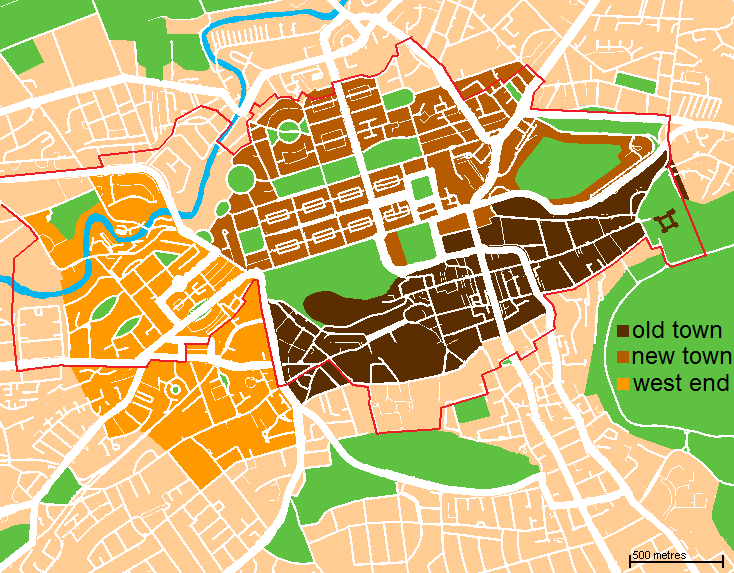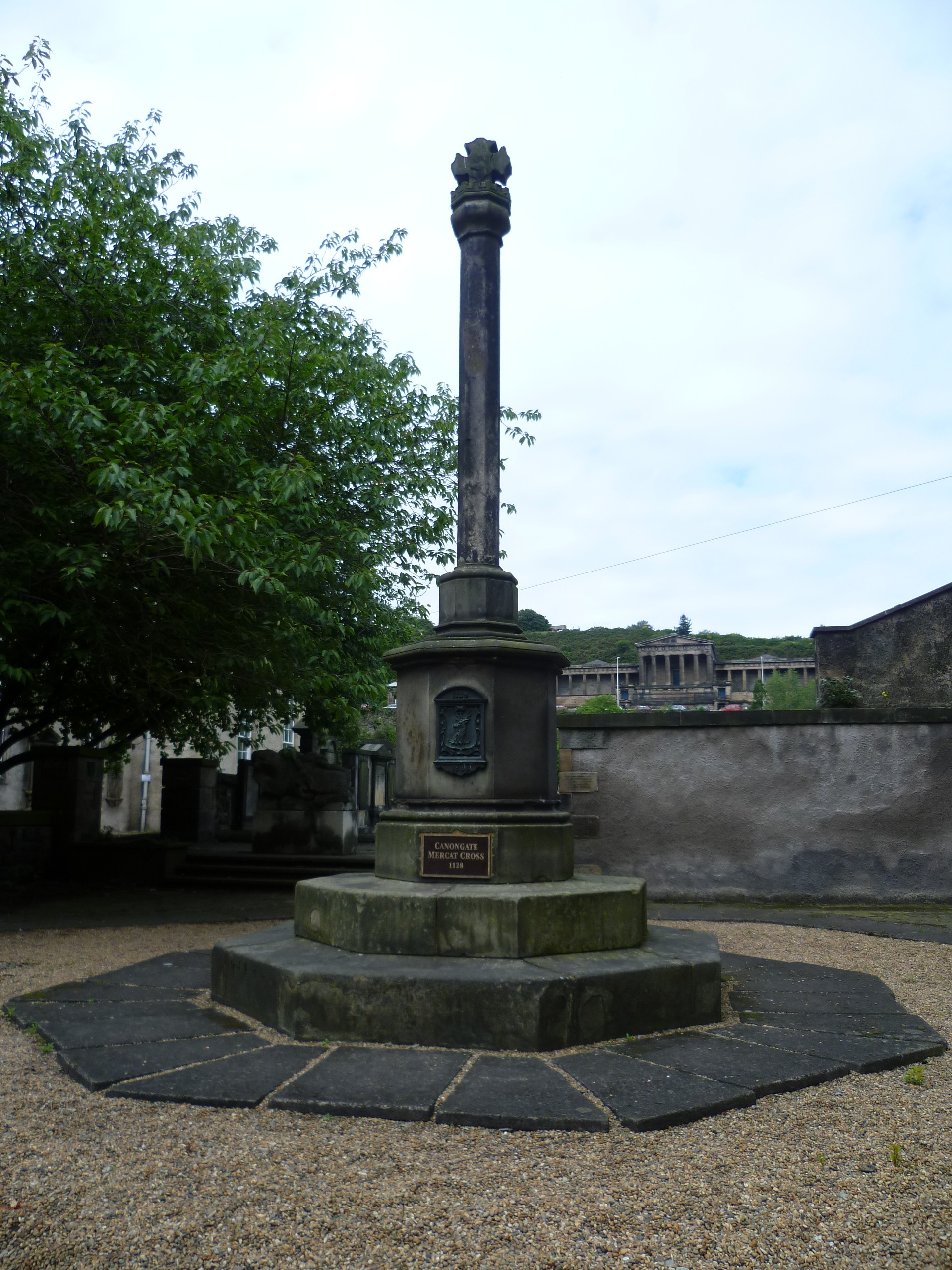|
Caltongate
Caltongate, now known as New Waverley Square, is the largest city centre redevelopment project in Edinburgh since the 18th century. First proposed in 2005, it took 9 years to be approved by Edinburgh Council, after delays due to the 2008 financial crisis. The name Caltongate combines Canongate and Calton Hill, as the area lies on Canongate, and faces directly onto Calton Hill. Caltongate lies within the Old Town, Edinburgh, which was recognised as a UNESCO World Heritage site in 1994. Construction began in 2014 and is yet to be completed. History Context ''This section refers to the post-18th-century context relevant to the Caltongate development. If looking for a more comprehensive review of the history of this regionsection 3 of this article is recommended.' In 1817, the site of the Caltongate development on New Street was initially built up as the New Street Gasworks along with the rise of coal gas alongside the Industrial Revolution, industrial revolution. Due to a subseq ... [...More Info...] [...Related Items...] OR: [Wikipedia] [Google] [Baidu] |
Old Town, Edinburgh
The Old Town () is the oldest part of Scotland's capital city of Edinburgh. The area has preserved much of its medieval street plan and many Scottish Reformation, Reformation-era buildings. Together with the 18th/19th-century New Town, Edinburgh, New Town, and West End, Edinburgh, West End, it forms part of a protected UNESCO World Heritage Site. Royal Mile The "Royal Mile" is a name coined in the early 20th century for the main street of the Old Town which runs on a downwards slope from Edinburgh Castle to Holyrood Palace and the ruined Holyrood Abbey. Narrow ''List of closes on the Royal Mile, closes'' (alleyways), often no more than a few feet wide, lead steeply downhill to both north and south of the main spine which runs west to east. Significant buildings in the Old Town include St. Giles' Cathedral, the General Assembly Hall of the Church of Scotland, the National Museum of Scotland, the Old College, University of Edinburgh, Old College of the University of Edinburgh, P ... [...More Info...] [...Related Items...] OR: [Wikipedia] [Google] [Baidu] |
Edinburgh
Edinburgh is the capital city of Scotland and one of its 32 Council areas of Scotland, council areas. The city is located in southeast Scotland and is bounded to the north by the Firth of Forth and to the south by the Pentland Hills. Edinburgh had a population of in , making it the List of towns and cities in Scotland by population, second-most populous city in Scotland and the List of cities in the United Kingdom, seventh-most populous in the United Kingdom. The Functional urban area, wider metropolitan area had a population of 912,490 in the same year. Recognised as the capital of Scotland since at least the 15th century, Edinburgh is the seat of the Scottish Government, the Scottish Parliament, the Courts of Scotland, highest courts in Scotland, and the Palace of Holyroodhouse, the official residence of the Monarchy of the United Kingdom, British monarch in Scotland. It is also the annual venue of the General Assembly of the Church of Scotland. The city has long been a cent ... [...More Info...] [...Related Items...] OR: [Wikipedia] [Google] [Baidu] |
Canongate
The Canongate is a street and associated district in central Edinburgh, the capital city of Scotland. The street forms the main eastern length of the Royal Mile while the district is the main eastern section of Edinburgh's Old Town. David I of Scotland, by the Great Charter of Holyrood Abbey , authorised the Abbey to found a burgh separate from Edinburgh between the Abbey and the city. The burgh of Canongate which developed was controlled by the Abbey until the Scottish Reformation, when it came under secular control. In 1636 the adjacent city of Edinburgh bought the feudal superiority of the Canongate but it remained a semi-autonomous burgh under its own administration of bailies chosen by Edinburgh magistrates, until its formal incorporation into the city in 1856. The burgh gained its name from the route that the canons of Holyrood Abbey took to Edinburgh—the canons' way or the canons' gait, from the Scots word ''gait'' meaning "way". In more modern times, the easter ... [...More Info...] [...Related Items...] OR: [Wikipedia] [Google] [Baidu] |
Calton Hill
Calton Hill (; ) is a hill in central Edinburgh, Scotland, situated beyond the east end of Princes Street and included in the city's United Nations Educational, Scientific and Cultural Organization, UNESCO World Heritage Site. Views of, and from, the hill are often used in photographs and paintings of the city. Calton Hill is the headquarters of the Scottish Government, which is based at St Andrew's House,Youngson, A.J. (2001): "The Companion Guide to Edinburgh and the borders", Chapter 9 (Calton Hill), Polygon Books, Edinburgh, UK, on the steep southern slope of the hill. The Scottish Parliament Building and other prominent buildings such as Holyrood Palace lie near the foot of the hill. Calton Hill is also the location of several monuments and buildings: the National Monument of Scotland, National Monument,T ... [...More Info...] [...Related Items...] OR: [Wikipedia] [Google] [Baidu] |
Canongate Venture
The Canongate is a street and associated district in central Edinburgh, the capital city of Scotland. The street forms the main eastern length of the Royal Mile while the district is the main eastern section of Edinburgh's Old Town. David I of Scotland, by the Great Charter of Holyrood Abbey , authorised the Abbey to found a burgh separate from Edinburgh between the Abbey and the city. The burgh of Canongate which developed was controlled by the Abbey until the Scottish Reformation, when it came under secular control. In 1636 the adjacent city of Edinburgh bought the feudal superiority of the Canongate but it remained a semi-autonomous burgh under its own administration of bailies chosen by Edinburgh magistrates, until its formal incorporation into the city in 1856. The burgh gained its name from the route that the canons of Holyrood Abbey took to Edinburgh—the canons' way or the canons' gait, from the Scots word ''gait'' meaning "way". In more modern times, the eastern e ... [...More Info...] [...Related Items...] OR: [Wikipedia] [Google] [Baidu] |
UNESCO
The United Nations Educational, Scientific and Cultural Organization (UNESCO ) is a List of specialized agencies of the United Nations, specialized agency of the United Nations (UN) with the aim of promoting world peace and International security, security through international cooperation in education, arts, sciences and culture. It has 194 Member states of UNESCO, member states and 12 associate members, as well as partners in the Non-governmental organization, non-governmental, Intergovernmental organization, intergovernmental and private sector. Headquartered in Paris, France, UNESCO has 53 regional field offices and 199 National Commissions for UNESCO, national commissions. UNESCO was founded in 1945 as the successor to the League of Nations' International Committee on Intellectual Cooperation.English summary). UNESCO's founding mission, which was shaped by the events of World War II, is to advance peace, sustainable development and human rights by facilitating collaboratio ... [...More Info...] [...Related Items...] OR: [Wikipedia] [Google] [Baidu] |
Cockburn Association
The Cockburn Association, often subtitled Edinburgh Civic Trust, is an architectural, conservation, and urban planning monitoring organisation in the city of Edinburgh, Scotland, United Kingdom. The Cockburn Association, founded in 1875, is one of the world's oldest architectural conservation and urban planning monitoring organisations. The association successfully resisted plans to build an inner-city motorway system in Edinburgh in 1965. In 2004 it mounted a major campaign to resist the removal of trees at Bruntsfield Links. The association has campaigned for the retention and improvement of Edinburgh's open and green spaces ever since. See also * Architectural Heritage Society of Scotland * Civic Trust (England and Wales) *National Trust for Scotland The National Trust for Scotland () is a Scottish Building preservation and conservation trusts in the UK, conservation organisation. It is the largest membership organisation in Scotland and describes itself as "the charit ... [...More Info...] [...Related Items...] OR: [Wikipedia] [Google] [Baidu] |
Architectural Conservation
Conservation and restoration of immovable cultural property describes the process through which the material, historical, and design integrity of any immovable cultural property are prolonged through carefully planned interventions. The individual engaged in this pursuit is known as an architectural conservator-restorer. Decisions of when and how to engage in an intervention are critical to the ultimate conservation-restoration of cultural heritage. Ultimately, the decision is value based: a combination of artistic, contextual, and informational values is normally considered. In some cases, a decision to not intervene may be the most appropriate choice. Definitions Narrow definition The Conservation Architect must consider factors that deal with issues of prolonging the life and preserving the integrity of architectural character, such as form and style, and/or its constituent materials, such as stone, brick, glass, metal, and wood. In this sense, the term refers to the "prof ... [...More Info...] [...Related Items...] OR: [Wikipedia] [Google] [Baidu] |
Edinburgh World Heritage
Edinburgh World Heritage (EWH) is an independent charity in Edinburgh, Scotland established in 1999. It is tasked with conserving, enhancing and promoting Edinburgh's World Heritage Site " Old and New Towns of Edinburgh", which was designated in 1995. It was created through donations from the City of Edinburgh Council and Historic Scotland. The EWH has worked on over 1,500 projects across Edinburgh in the areas of conservation, learning, and planning. Some of these projects include restoring Edinburgh's historic graveyards, original street lighting, and monuments. History By the 1960s, parts of the New Town of Edinburgh were in poor condition and in risk of being demolished. In 1971, the Edinburgh New Town Conservation Committee was formed to give grants to home owners for repairs. In 1985, the Edinburgh Old Town Committee for Conservation and Renewal, later the Edinburgh Old Town Renewal Trust, was formed with an emphasis on stimulating social and economic regeneration. In 1999 ... [...More Info...] [...Related Items...] OR: [Wikipedia] [Google] [Baidu] |
Arcade (architecture)
An arcade is a succession of contiguous arches, with each arch supported by a colonnade of columns or Pier (architecture), piers. Exterior arcades are designed to provide a sheltered walkway for pedestrians; they include many loggias, but here arches are not an essential element. An arcade may feature arches on both sides of the walkway. Alternatively, a blind arcade superimposes arcading against a solid wall. Blind arcades are a feature of Romanesque architecture that influenced Gothic architecture. In the Gothic architectural tradition, the arcade can be located in the interior, in the lowest part of the wall of the nave, supporting the triforium and the clerestory in a cathedral, or on the exterior, in which they are usually part of the walkways that surround the courtyard and cloisters. A different, related meaning is "a covered passage with shops on one or both sides". Many medieval open arcades housed shops or stalls, either in the arcaded space itself, or set into the mai ... [...More Info...] [...Related Items...] OR: [Wikipedia] [Google] [Baidu] |
World Heritage Committee
The World Heritage Committee is a committee of the United Nations Educational, Scientific and Cultural Organization that selects the sites to be listed as UNESCO World Heritage Sites, including the World Heritage List and the List of World Heritage in Danger, defines the use of the World Heritage Fund and allocates financial assistance upon requests from States Parties. It comprises representatives from 21 state parties that are elected by the General Assembly of States Parties for a four-year term. These parties vote on decisions and proposals related to the World Heritage Convention and World Heritage List. According to the World Heritage Convention, a committee member's term of office is six years. However many States Parties choose to voluntarily limit their term to four years, in order to give other States Parties an opportunity to serve. All members elected at the 15th General Assembly (2005) voluntarily chose to reduce their term of office from six to four years. D ... [...More Info...] [...Related Items...] OR: [Wikipedia] [Google] [Baidu] |








